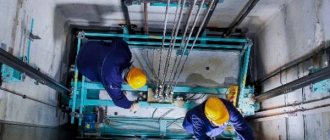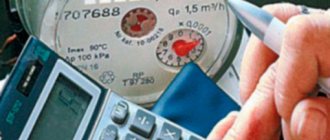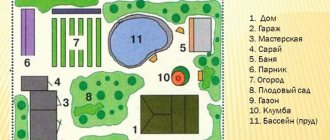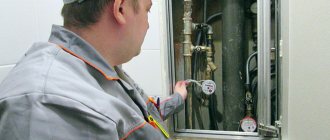Home/Water supply and sanitation
Communication systems of apartment and private buildings are formed from complex design work, which involves the development of water supply and sanitation systems. Engineering calculations for the design of communications are carried out in compliance with all the rules of water supply and sewerage, which determine all the necessary standards.
For your information
The supply of water resources to residential premises is based on the regulatory framework provided by government documentation. It provides not only rules at the design stage, but also the actions of the supplier and user of these resources.
Normative base
All regulations relating to the rules of water supply and sanitation of residential buildings, both private and multi-apartment buildings, are regulated by several documents.
Attention! If you have any questions, you can chat for free with a lawyer at the bottom of the screen or call Moscow; Saint Petersburg; Free call for all of Russia.
General legislation of the Russian Federation:
- Constitution of Russia of December 12, 1993.
- Housing Code of the Russian Federation (Article 188 Federal Law) dated December 29, 2004.
- Federal Law No. 189 of December 29, 2009 “On the entry into force of the Housing Code of the Russian Federation.”
As well as Tariff regulation, Information disclosure standards and the Organization of water supply and sanitation of residential buildings:
- Decree of the Government of Russia No. 6 “On information disclosure standards in the field of water supply and sanitation” (dated January 17, 2013).
- FAS Order No. 792/17 “On approval of forms for providing information subject to disclosure by organizations providing hot and cold water supply and sanitation, and tariff regulatory authorities, as well as Rules for filling out such forms” dated 06/19/2017.
- Order of the Federal Tariff Service No. 2244-e “On approval of the Information Disclosure Regulations” dated December 16, 2014.
- Decree of the Government of the Russian Federation of May 13, 2013 No. 406 “On state regulation of tariffs in the field of water supply and sanitation.”
Building regulations
Residential building drainage and water supply systems are designed and built in accordance with regulatory rules regulated by certain documents. These rules are designed to guide external and internal communication systems.
The basic rules for supplying water to residential buildings include the following:
- All communication projects, the purpose of which is water supply to residential premises, must be coordinated taking into account all the nuances during the construction of a central sewer system.
- All water supply systems must be surrounded and protected by a water supply security zone.
- Water supplied to residential premises, the purpose of which is for household and food activities, must fully satisfy sanitary standards and comply with the state quality standard.
- All water supply and sanitation systems must be made in accordance with modern technologies, provide for complete automation of processes and mechanization of hard human work.
All construction work on water supply systems must include the following nuances:
- Features of the premises of those objects where supply is expected.
- Location and features of the source of drinking and industrial water.
- Required water flow, its maximum pressure and quality.
Rules and regulations for drainage systems:
- The sewer system must be located and equipped taking into account the premises for which it is intended.
- Drainage must be designed not only for the removal of domestic or industrial liquids, but also for melt and rain water.
- The locking system is the passage of sewer pipes in the ceiling, walls and floor of residential premises.
Municipal control
The state is required to monitor not only tariffs for water and sewerage, but also the general condition of these systems. The following goals are pursued:
- social - health of citizens;
- environmental - when supervising wastewater treatment, the ecological state of the environment and local water bodies is protected;
- managerial - in general, the government strives to establish an economical use of natural resources, as well as to increase the efficiency of the activities and management systems of organizations that supply hot and cold water;
- economic - to attract investment in this area.
This is important to know: Certificate of technical readiness of the heating system
When exercising municipal control, scheduled and unscheduled inspections of individual entrepreneurs are carried out, prices are monitored, new tariffs are analyzed, activity forecasts are carried out, and preventive measures are carried out.
All these actions are recorded in Article 35 of Federal Law No. 416-FZ.
Design of internal water supply and sanitation systems
Designing internal water supply and sanitation systems is a complex, lengthy process that requires accurate calculations. After all, the slightest mistake can lead to the most disastrous results.
It consists of several stages. Let us briefly reveal the essence of each.
- At the first stage, technical conditions for connection are drawn up. A master plan indicating the source of liquid supply, soil characteristics, the depth of groundwater passage are studied, and external networks are studied.
- At the second stage, they move on to drawing up technical specifications. This includes a plan of the facility as a whole and each floor separately, and transport routes. The technical assignment is often carried out in the form of a layout and photomontage.
- At the third stage, design documentation is drawn up. And for complex objects - also a working one. The project documentation consists of an explanatory note, which prescribes calculations for the required volumes of liquid consumption, its pressure, heat consumption for hot water supply, drawings of the water supply system itself and individual documents (regarding equipment and materials, various specifications).
Design is carried out only by specialists. All documentation is approved by the customer and agreed upon with municipal authorities.
International standards for sewerage and wastewater disposal
In order to improve access to quality drinking water and carry out wastewater treatment work, the UN-Habitat program on water supply and wastewater disposal has been adopted. The main directions of the Program are:
- increasing access to clean water in countries in Africa and Asia, where there is a difficult situation in this area;
- outreach to local governments;
- conducting policy dialogue and transferring best practices.
Other bodies have been created to provide the population with high-quality life-giving liquid, as well as to protect the world's H2O resources. For example, International Water Association, World Water Council.
International thematic forums are held regularly. Their goal: to ensure the right to clean water, to change and develop the sanitation complex and hydropower, to instill hygiene, to protect ecosystems.
Standards for water supply and sanitation in a residential building
Water supply standards
The water supply system for supplying water to each residential premises is designed in accordance with SNiP 2.04.02-84. It states that at each point of a residential building (apartment or private house) the water pressure from the tap is different. So, on the upper floors the indicator depends on that on the first.
For your information
The rate of water pressure in the tap depends on the number of floors of a residential building. For a one-story building, the pressure norm will be 10 m in. Art. For each upper floor, 4 m in. will be added. Art.
Water disposal standards
The rate of water disposal in a residential building is determined by the average daily amount of wastewater from one user. This indicator is determined in accordance with water supply standards depending on the climatic, sanitary, hygienic and environmental characteristics of the area.
Water disposal standards are made up of wastewater entering the sewer system from each apartment in an apartment building and from each private house. In areas without sewerage, the average daily norm is taken at the rate of 25 l/day per resident.
What do sewerage and drainage have in common?
As a general characteristic of sewerage and drainage measures, one can name their purpose, that is, the tasks they perform in the complex of utility services provided:
- transportation of wastewater from the water collection system directly from the premises where the water was used: from showers, bathtubs, sinks, toilets and other plumbing fixtures;
- drainage of wastewater inside a building - multi-apartment or private - to sewer risers;
- removal of waste liquid outside the house;
- transport of liquid to the cleaning site.
Additionally, this may include the task of accumulating, accumulating, settling and purifying wastewater, but this is already the task of the sewer system. All together, in accordance with the Federal Law on Water Supply and Sanitation No. 416 of December 7, 2011, it is a set of works designed to protect the environment from pollution during the exploitation of water resources by consumers.
Naturally, no cleaning can completely free the environment from pollution from water waste. But in accordance with the sanitary requirements of SanPiN 2.1.5.980-00.2.1.5. “Water drainage of populated areas, sanitary protection of water bodies. Hygienic requirements for the protection of surface water”, the level of pollution of external objects must remain strictly defined. The fact is that the purity of water resources that will be used for water supply depends on the quality of treatment of wastewater discharged into the external environment.
When clarifying the identity of the concepts of sewerage and drainage, it is difficult to give an unambiguous answer, since in the current legislation their differences are not indicated with the necessary clarity. It is most often believed that drainage is a broader concept, which, among other activities, includes sewerage. Both of these, together with other utilities, constitute a system for maintaining the functioning of the living space.
Features of water supply systems of an apartment building
Providing water supply and sewerage to an apartment building is regulated by RF Regulation No. 354 “On the provision of utility services to owners and users of premises in apartment buildings and residential buildings” dated May 6, 2011.
To supply water resources to apartment buildings, a centralized communication system is used. It is characterized by the complexity of its design, since it involves the provision of water from a common source to each room of an apartment building.
Water flow diagram for central water supply:
- Water intake;
- Water treatment station;
- Water tanks;
- Pumping station;
- Water supply network;
- Consumer.
Water disposal
The sewer system of an apartment building requires regular cleaning, since waste and waste passing through the drainage pipes reduce their volume, which leads to clogging. Properly designed systems have the property of self-cleaning, which is possible due to the flow of wastewater under a certain pressure and slope.
Attention
Periodic cleaning and repair work are still necessary. These actions can also be carried out by the residents themselves, since cleaning is carried out in the connecting elements of the pipes between the toilet or sink and the waste pipe.
The drainage system of apartment buildings is equipped with a water seal. It is designed to eliminate gases accumulating in pipes and preventing their penetration into apartments. The water seal is a curved tube connecting sinks/toilets/baths with waste pipes.
Features of water supply and sanitation of a private house
Implementation of water supply to private houses is feasible in two ways:
- private;
- centralized.
Private water supply is much easier to implement, since it involves drilling a well or well on a separate residential plot, the extracted water from which is supplied only to one house. Private water supply is important for areas remote from cities.
Additional Information
A centralized water supply system for private houses is designed less frequently than an autonomous one, and is intended for cottage villages or town-house complexes.
Water disposal
Sewage systems must be designed together with water supply systems. Moreover, drainage of private houses should imply the removal of not only domestic wastewater, but also the consequences of rainfall and melted snow. Currently, each residential plot has an autonomous drainage system. Its location should be 10-15 meters from the house, and also fenced.
The wider and deeper the sewer drain is dug, the more wastewater can be discharged.
General information
In the modern world it is impossible to imagine housing without water and sewerage. That is why a project for drainage is being developed with a detailed layout of the main components. This project allows you to use the water supply normally.
It is necessary to install a water supply and sewerage system at the initial stage of construction. Therefore, it is worth understanding what a drainage and sewerage system is. Essentially, it's the same thing. After all, they are part of the same system and cannot work autonomously from each other.
Of course, there are slightly different rules for the private sector. In a private home, drainage is the reception and treatment of wastewater that enters through a centralized drainage system. In addition, sewerage is a public service. Sewerage is a complex of engineering structures that are interconnected. The main purpose of this system is to transport wastewater. It follows from this that these systems are similar, but at the same time different. Each system has its own characteristics. And it doesn't stop there.
Providing a home with various communications is the main condition for a person’s comfortable stay in his home.
Terms of use and provision

Water resources intended for food and household use are supplied to residential apartments and houses from a supplier (organization) with which all owners have entered into an agreement, through a management company. Contractual relations are based on the rules of the Civil Code of the Russian Federation.
These rules describe the rules for drawing up a contract, the algorithm for accounting and payment for the resource used, the procedure for installing and taking readings from meters. Based on a mutual agreement, residents have the right to use water supply. Without official documentation, using water provided by the supplying organization is a violation of criminal and administrative codes. This procedure also applies to the use of drainage systems.
Consumption standards and SNiP for water supply
The consumption rate represents the permissible maximum volume of water of appropriate quality, which is necessary to meet the needs of ordinary consumers living in a certain housing. Water consumption standards are determined in accordance with construction rules and regulations adopted by executive authorities.
This is important to know: Concession agreement for water supply facilities: sample
The amount of water consumption will always depend on the quality and standard of living of people.
So, if 120 years ago the volume of water consumed per Muscovite was 11 liters of water per day, then 100 years ago this figure was 66 liters for daily consumption. Today, the average volume of water per Moscow resident is 700 liters.
Water consumption depends on:
- The climate of the place of residence;
- Work activity performed.
For residents of the southern regions, the need for water will be much greater than for the northern ones.
Payment rules for water supply and sanitation
Owners of houses and apartments pay for water supply and sewerage monthly, according to the calculations presented in the receipt. Payment is made to the account of the management company.
According to the Russian Federation Regulation dated May 6, 2011 No. 354, the amount in the receipt for hot and cold water is formed based on the amount of its consumption (in cubic meters). Generally established rules determine that the number of cubic meters of waste water is equal to the number of cubic meters of water supply.
Attention
Payment for consumed water is based on meter readings, which are established by the management company. Meters must fully comply with the standards of the Russian Government, and must also be sealed. His testimony is entered monthly into the receipt, on the basis of which the payment amount is formed.
If cold and hot water meters are not installed in an apartment or house, then the payment amount is determined by standards calculated for each person registered in the apartment. Payments are made for the residents actually living in the premises.
Water consumption and wastewater disposal
How to draw up a balance of water consumption and wastewater disposal
To calculate consumption volumes, they are guided by the specifics of the building: its purpose, the number of people, the approximate volume of water used, etc.
The balance of water consumption and wastewater disposal solves the following problems:
- Permission to connect to the central system.
- Selection of optimal pipes for sewerage and water supply.
- Calculation of various parameters.
- License to use natural resources.
- Possibility of concluding a second-order agreement.
Balance table
All readings are indicated in the water consumption balance table.
You can follow the link for tables with filling () There is no clear example of what such a table should look like, but water utilities usually provide a sample.
If you have a small business, then your plan will be something like this:
- Three columns – number of consumer groups, name, quantitative characteristics.
- Regulatory acts for all groups.
- We calculate the total water consumption.
- We enter all the data, take out separately water that does not return (irrigation, swimming pool, etc.).
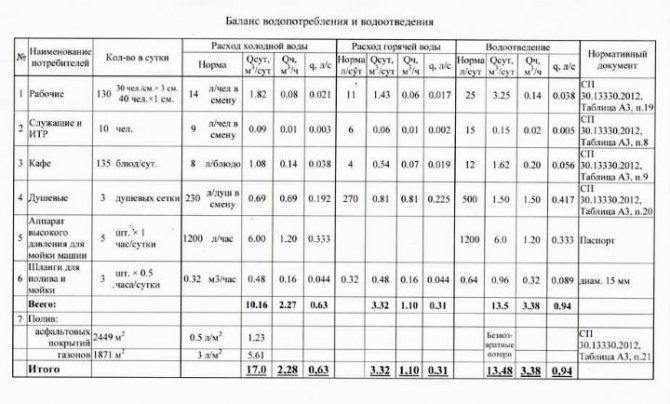
Most often, the difference between water consumption and removal is from 10 to 20%.
Requirements and standards for meters
An accurate calculation of the water balance will help you pay for water reasonably. Also be sure to install a meter. It is thanks to him that the amount of water used is shown to the last drop.
If you have a counter installed, everything becomes much simpler: we take the indicators from the display, multiply by the price per cube and you're done. Meters can be installed on both hot and cold water. Make sure they are in good condition, have seals, etc.

Special metering devices are not used for wastewater. In this case, the volume of water consumed is taken into account. Thanks to meters, not only residents who try to save money, but also employees of water utilities are disciplined, since losses from worn-out pipes can no longer be attributed to careless consumers.
Rules for installing meters have also been developed:
- Be sure to install a debris filter.
- We use a check valve to prevent water from flowing back.
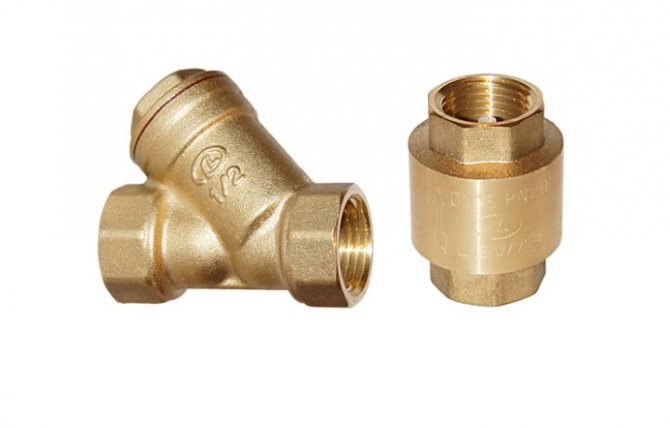
When purchasing a meter, pay attention to its passport, check that all device numbers and parts match.
Let's calculate the balance of water consumption.
To carry out the calculation, you need the maximum flow rate per day, as well as some additional parameters.
Calculation standards
In our country, there are different consumption rates for different regions:
- Outdoor water standpipe – 40/100 l per person.
- Apartment without bathroom – 80/110 l.
- House or apartment with bathroom – 150/200 l (see infographic picture)
- Central cold and hot water – 200/250 l.
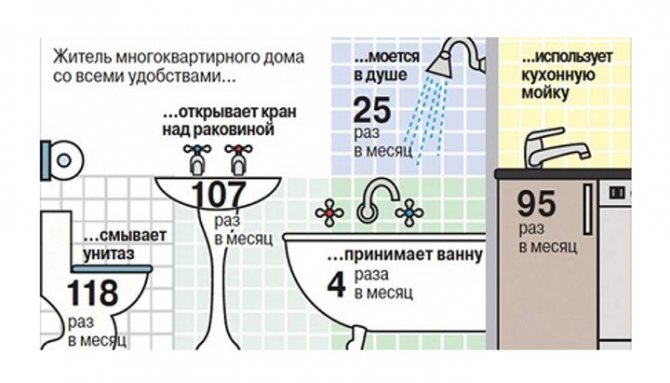
If you have pets, then you can find rules for caring for them and their habitat. A cow will need 70/100 liters, a horse – 60-70 liters, a pig – 25 liters, a chicken – 1-2 liters.
Don't forget to provide a fire extinguishing system. Be sure to place hydrants on wells and pipes. If you can’t install them, then make a water tank.
There are also standards for watering and caring for trees and other vegetation.
Relationships between consumers and suppliers
You must understand that you, as a consumer, have certain rights.
Consumer rights
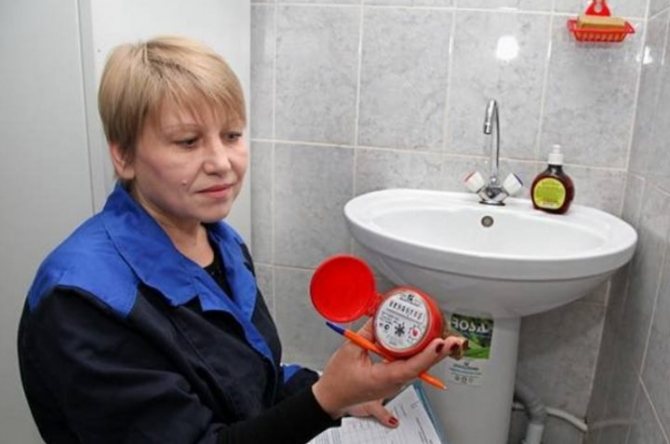
You can receive the service continuously.- You can install water meters.
- You can recalculate payment and penalties if you do not receive the service in full.
- You can terminate the contract by submitting an application 15 days before payment.
You can also always receive information about the status of your account.
Supplier Rights
- Turn off the water supply if the network is not in proper condition.
- Gain access to take instrument readings.
- Carry out repairs according to schedule.
- Stop water supply if you are in debt.
- Turn off the water due to an accident, power outage, etc.
If disputes cannot be resolved, you can go to court.
We have tried to provide all the information that may be useful to you; be careful with resources and save as much as possible.
Rules for calculating water supply and sanitation
Calculation of water disposal and water supply is carried out according to the following algorithm:
- Readings are taken from the installed meter and entered in the column on the receipt. If there are no meters, then payment is made according to average consumption standards established by the local administration.
- The amount (in cubic meters) of cold/hot water consumed (indicators taken from meters) is multiplied by the sewerage tariff (indicated in the receipt).
- The final indicators of cold and hot water are added up and the amount of payment for sewage disposal from a residential premises is obtained.
The readings of the sewer systems of an apartment building and a residential building differ in that in the first case, payment is formed from the data of the general building meter, and not from each device in each apartment.
Sewerage and drainage tasks
The main task of drainage is to drain rainwater and melt water and prevent the formation of perched water. Verkhodka is one of the types of groundwater and is seasonal. Most often it occurs as a result of excessive watering, rapid melting of snow, and excessive precipitation. By mid-summer, these waters completely evaporate and can only appear after heavy rains.
This is a problem for private houses that have basements. But this problem can easily be solved with the help of well-equipped drainage and sewerage systems.
Another important detail is the roof drainage system. The main task is to collect and drain rainwater to the main collection points for such water. You cannot save on this system, because over time the water will wash out the blind area and the foundation will be splashed with dirt. And to avoid such problems, drainage systems are installed on the surface. To drain water from basements, I make deep drains.

The sewer system has much simpler tasks. Yes, and the device is not so complicated, but the role is no less, and sometimes more, than that of the drainage system. The sewer system must remove dirty water and sewage from the house. It also transports wastewater within the house and directs it to sewer risers. Removes wastewater from the house and delivers it to treatment plants. If one of these tasks is not completed, you can forget about decent operation of the house. Sewage water can burst out and then our repairs and comfort in the house would deteriorate. Therefore, when choosing a sewerage scheme for a residential building, there should be no mistakes.
An incorrectly designed and assembled network will not work or problems will arise. The sewerage design should be simple, this will minimize errors that may occur during installation.
When considering sewerage in a private house, you should pay attention to the fact that the central sewerage system is not installed everywhere. What if this is a country house? There can be no question of connecting to the central sewerage system. In this case, you should develop a plan that is suitable for one specific house. This may be a cesspool that will have to be pumped out periodically. In this case, your sewage system will be completely autonomous. But to make such a decision you need to consult a specialist. It will be quite difficult to make such a decision on your own. This drainage system also has a special feature. It contains a high concentration of various chemicals and impurities of organic origin. And to get rid of such sewage, you should use septic tanks. But the liquids in question can not only be removed, but collected and reused, for example, for filling a toilet tank or watering vegetables.

